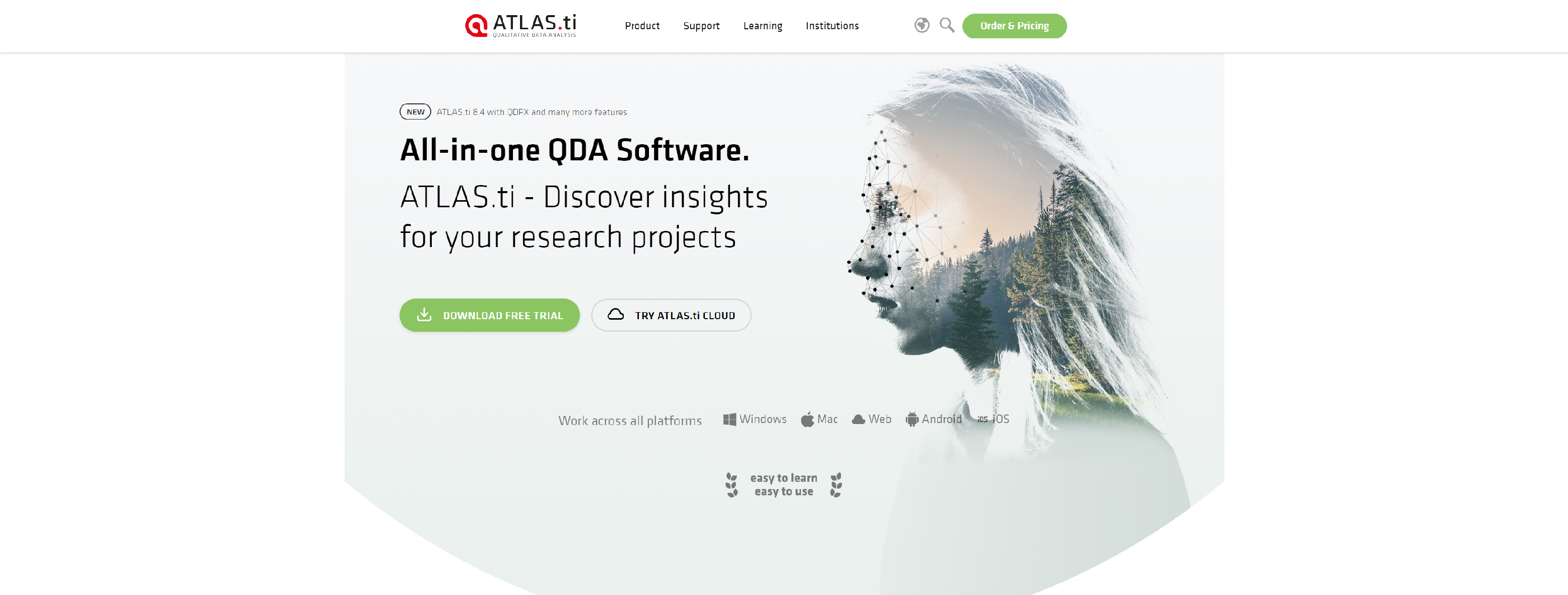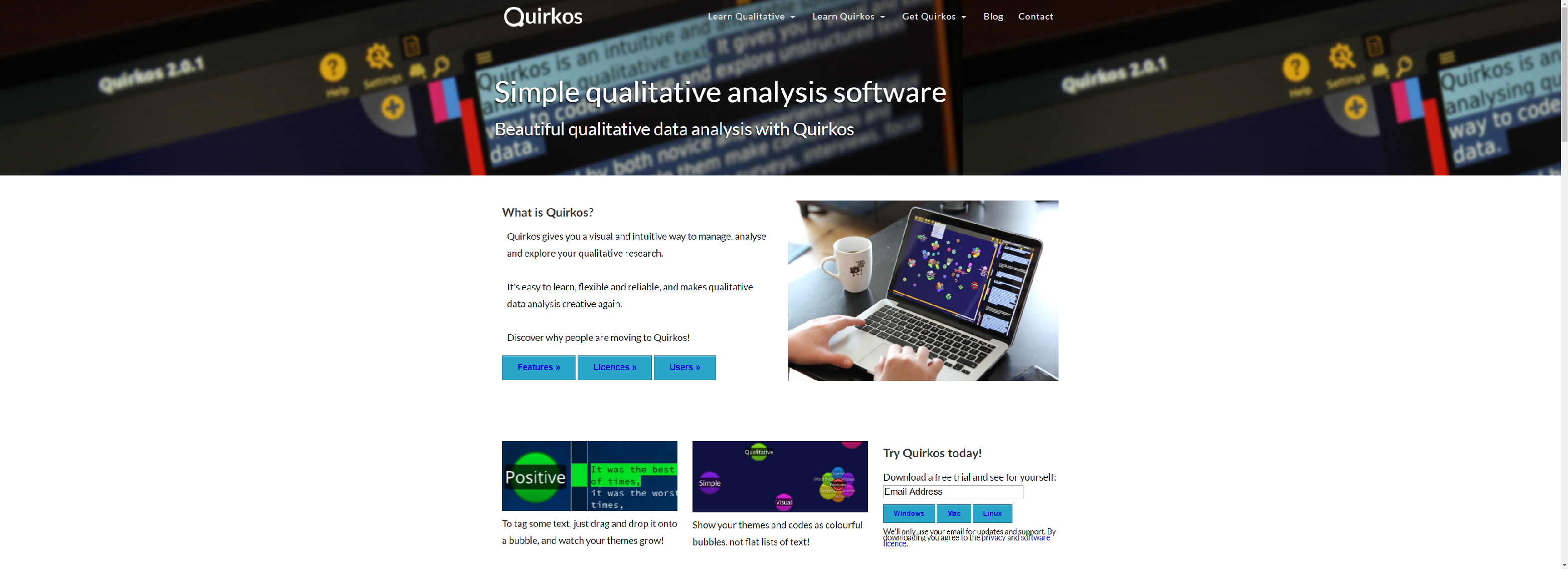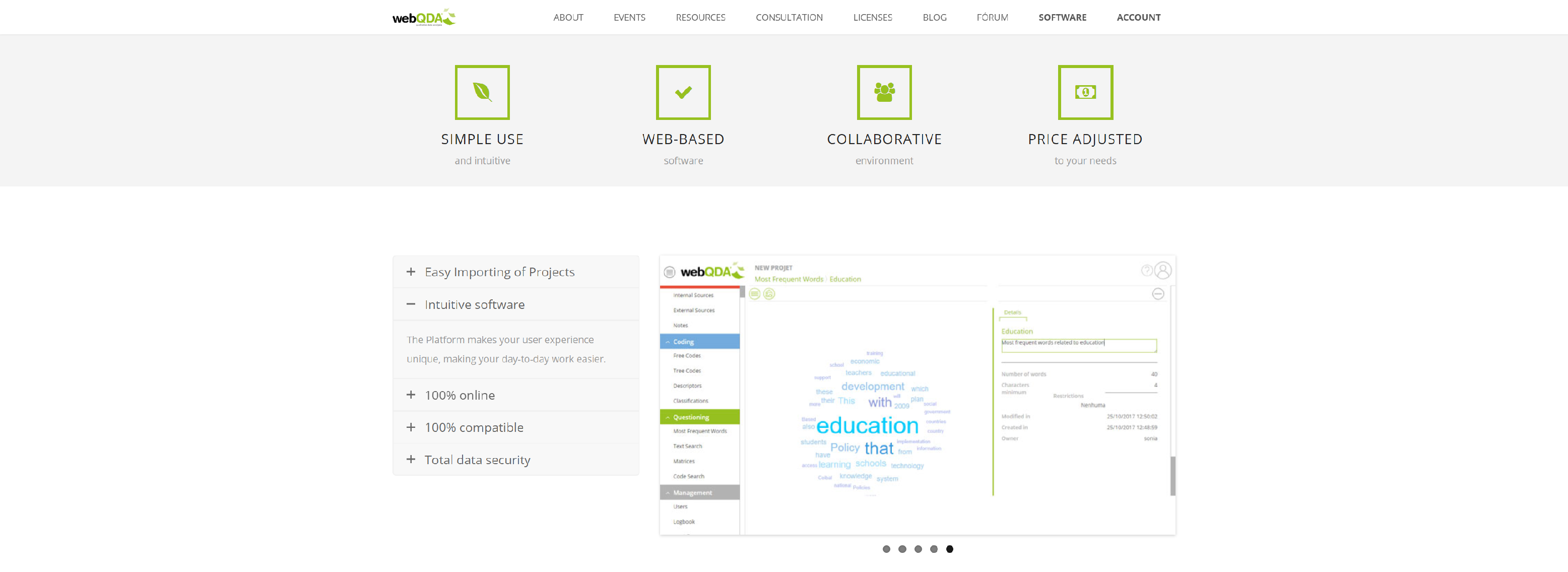The term “Qualitative Research” is commonly applied to a set of methods that are used in the social and human sciences. Although the term was originally coined in the social sciences, a great many related fields–from psychology to market research to media studies) today rely on methodology that can also be described qualitative research.
Qualitative research has been defined as “a research method for the subjective interpretation of the content of text data through the systematic classification process of coding and identifying themes or patterns” (Hsieh & Shannon), as an “approach of empirical, methodological controlled analysis of texts within their context of communication, following content analytic rules and step by step models, without rash quantification” (Mayring), and as “qualitative data reduction and sense-making effort that takes a volume of qualitative material and attempts to identify core consistencies and meanings” (Patton).
Qualitative research the exploration of human behavior as they are expressed in in individual utterances, manifestations, artifacts, and with the driving motives behind these expressions as they can be determined from them. Qualitative research is thus a prevalent method of inquiry in a great variety of disciplines – it can be applied in nearly all fields, where human thought, notions, mindsets, attitudes, or characteristics are investigated through concrete expressions. Typically, these include spoken, written, or recorded word, imagery (drawn, painted, or photographed), as well as moving images. Qualitative research aims at understandingindividual issues, cases, or manifestations, to answer general questions. It can be said that the qualitative researcher seeks to deduce general (or generalizable) meaning through to thorough investigation of concrete phenomena. Her method can be described as attempting to understand social reality through a methodology that is at once subjective and scientific.
Typically, the primary objective of qualitative research can be described as gaining insight into the attitudes, behaviors, value systems, concerns, motivations, aspirations, culture or lifestyles of individuals, groups, or even populations. Clearly, the strength of this approach lies in the fact that it considers concrete manifestations within their particular contexts, and hence in its ability to address complex questions about concrete phenomena.
Thorough analysis forms the basis of this understanding.
Qualitative research frequently involves the analysis of any “unstructured” material. The term “unstructured” is applied here to delineate the types of manifestations the researcher deals with in opposition to so-called “structured” data, in this context a predominantly referring to numerical and statistical data.
Dealing with “unstructured” information–for example, interview transcripts, addresses, emails, notes, news articles, feedback forms, radio and television interviews, customer feedback forms, focus group reports, in-depth interviews, even images and videos–is traditionally less formalized and thought of as less rigid than quantitative approaches.
However, stringent methodologies have been developed in different fields to provide a common theoretical ground for exploring human expressions that, by their nature, defy simple quantification and purely statistical approaches. Content analysis, ethnography, evaluation and semiotics are among the many formal approaches that are used.
Looked at it in this way, qualitative research takes place in nearly every work and study environment, literally in all settings where non-quantitative (“unstructured”) data is being studied and analyzed in order to gain a deeper understanding of the actions and motivations behind it. This is accomplished by bringing out into the open and then reflecting on their hidden structures, unspoken motivations, and interrelations between different phenomena.
It thus can be said that qualitative research concerns itself first and foremost with “texts” (in the semiotic sense), be they considered statements, opinions, artifacts, utterances, or even palimpsests of concrete human expression.
In the first place, the application of qualitative methods produces information about the particular cases studied (observations). Not infrequently, conclusions about the cases start out as mere “informed guesses” or hypotheses. Quantitative methods are also used to verify or falsify these hypotheses.
CODING
Coding is a first-pass interpretation technique. It serves to organize the data at hand, and provides a useful way of entering these interpretations into a quantitative analysis framework. Before anything else, coding requires that the analyst go over the data, delineate individual segments (i.e. “mark” or “highlight” passages that interest her), and assign keywords (“codes”) to each of them.
In its traditional manual form, a researcher would typically separate each segment into a physical entity; traditionally, an index card labeled with a word or short phrase. This label should be formulated so as to most aptly suggest the relation of the associated data segment with the objectives of the research project itself.
Some types of qualitative data (e.g., open-end responses from surveys, tightly defined interview questions) are already highly structured from the outset. Such material, typically, can be coded without further segmenting of the content. Rather, the survey or interview questions themselves (or some abbreviated variations thereof) serve as coding device in these cases.
While coding is a powerful and quite efficient way for a first-pass traversal of even the large amounts of data, we should not overlook that a frequent criticism of the coding method – computer-aided or manual alike – is that it appears to seek to transform its material into “quasi-quantitative” data. In some ways it can be said that it “drains” the data of its variety, richness, and individual character.
It is commonly agreed that an efficient way to counter such criticism is by thoroughly expositing definitions of codes and linking those codes soundly to the underlying data.
Today, contemporary qualitative data analysis is frequently supported by computer programs.
Such programs enhance the analyst’s efficiency at data storage/retrieval and at applying the codes to the data. They do not, however, supplant or alter the interpretive nature of coding as such, nor do they usually assign codes of their own accord. Some programs, however, do offer a high degree of efficiency when it comes to assigning, editing, managing and revising codlings.
QDA programs in particular help the endeavor of expositing code definitions by efficiently linking codes with their primary data. Their main strength is to provide direct access to the original data segments at any time, thus guaranteeing the full “richness” of data that would be absent from a mere list of codes.
In a sense, qualitative analysis really and fully comes into its own by the use of dedicated computer software that makes it possible to work both on the “primary” and “secondary” level of the data at any time.
OVERVIEW: COMMON METHODS OF DATA ANALYSIS
Following is a cursory overview of the most common methods of data analysis as used in qualitative research.
- Typology/taxonomy: Classification system, list of categories.
- Grounded Theory: interpretational system based on coding.
- Induction: form hypotheses about an even, compare to similar events in order to verify, falsify or modify hypothesis.
- Matrix/Logical Analysis: Flow charts, diagrams.
- Quantitative/Quasi-Statistics: Numbers of events/mentionings.
- Event Analysis / Frame Analysis: Identification of specific boundaries (start, end) of events or event phases.
- Metaphorical Analysis: Development of specific metaphors for an event. .
- Domain Analysis: Cultural contex, focus on semantic relationships.
- Hermeneutical Analysis: Meaning of event/text in context (historical, social, cultural etc.)
- Discourse Analysis: Analysis of ongoing flow of communication between individuals.
- Semiotics: Definition of meaning as existing in concrete context exclusively.
- Content Analysis: Identification of themes and topics as well as latent themes and emphases.
- Phenomenology/Heuristic: Idiosyncratic meaning exists in relation to individual.
- Narratology: Study of the intrinsic structures of how a story is presented.
Some QDA programs are explicitly designed to support only one (or a small number) of these approaches.
QUALITATIVE METHODS
As mentioned previously, the most rudimentary form of analyzing qualitative data is observation. Concrete phenomena are examined by–expert or bystander–observers. They interpret, piece by piece, by forming an impression (or multitude of impressions) about them. Not infrequently, these impressions take the form of “keywords”. This first step of giving an initial structure to first-hand observation is referred to as “coding.” Once the entire material belonging to a particular project has been coded and thoroughly investigated, a form of reporting is chosen to summarize the findings of this stage of investigation.
Typically, these basic steps are repeated several times–how many times and to what level of depth depends strongly on the type of project, the type of material, and, last but not least, on the type of researcher.
REPORTING
After completing the coding stage, the analyst typically creates one or more reports of her findings. Such a report speaks to the similarities and differences in related codes across distinct original sources/contexts, to a comparison of the relationships between one or more codes, and to the prevalence of individual codes.
Dedicated QDA programs support the reporting effort by providing dedicated tools (such as text editors), but more importantly also allow direct linking of the report(s) to individual codes, groups (or “families”) of codes as well as to other parts of the project material.
ATLASTI

ATLAS is a powerful workbench for the qualitative analysis of large bodies of textual, graphical, audio and video data. It offers a variety of sophisticated tools for accomplishing the tasks associated with any systematic approach to “soft” data.
- Huge Variety Of Media Types
- Explore Material In Great Depth
- Powerful Tool set
- Unique Features
- Team Work
- Great User Support
MAXQDA

MAXQDA is QDA software for Windows and Mac OS X. Analyze Texts, Surveys, Tables, Images, Media, and more.
- Sleek & easy to use
- All your data, one place
- Transcription & media analysis
- Visualize your data & results
- Annotate, Paraphrase, Summarize
NVivo

NVivo is qualitative data analysis software for researchers working on Windows and Mac operating systems.
- Research getting published
- PhD research
- Not-for-profit support
- Public health studies
- Research grant funding
- Finding the best minds
QUIRKOS

Qualitative analysis software that’s easy to learn, with live visualisations of your text data and a free trial
- Fast code and retrieve
- Exploring qualitative data
- Sources and mixed-methods research
- Reports
- Teamwork
- International text support
WEBQDA

WebQDA is a web-based qualitative data analysis software for all researchers and practitioners performing qualitative research.
- Easy Importing of Projects
- Intuitive software
- 100% online
- 100% compatible
- Total data security